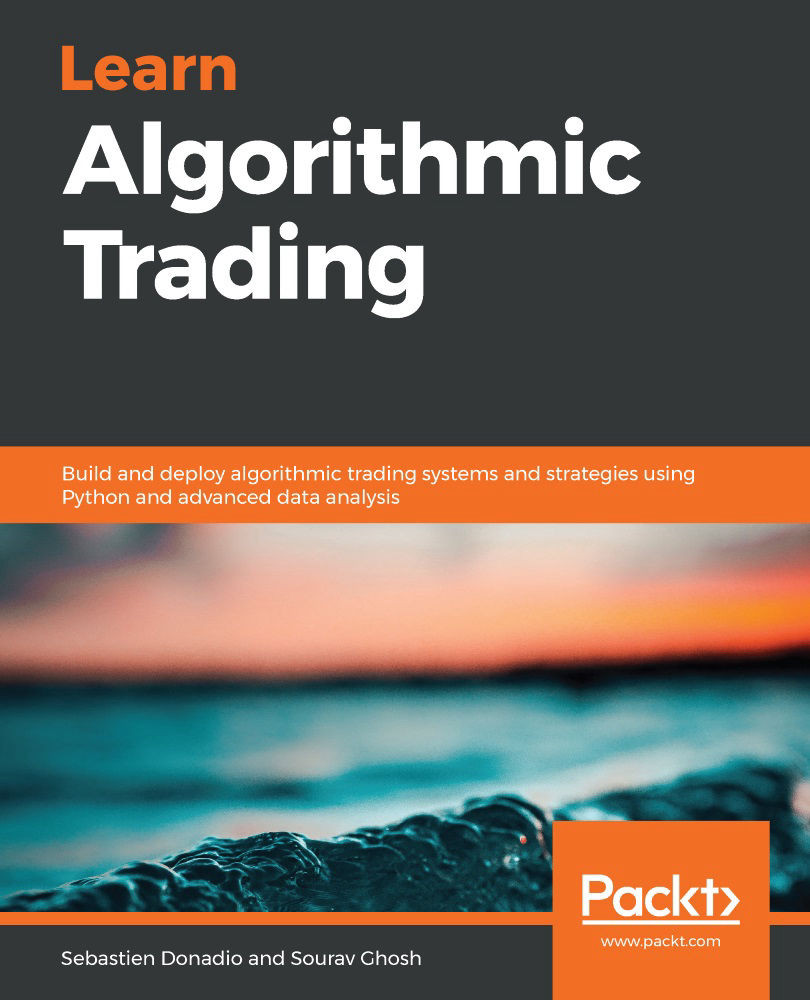In this chapter, we will explore more sophisticated trading strategies employed by leading market participants in the algorithmic trading business. We will build on top of the basic algorithmic strategies and learn about more advanced approaches (such as statistical arbitrage and pair correlation) and their advantages and disadvantages. We will learn how to create a trading strategy that adjusts for trading instrument volatility. We will also learn how to create a trading strategy for economic events and understand and implement the basics of statistical arbitrage trading strategies.
This chapter will cover the following topics:
- Creating a trading strategy that adjusts for trading instrument volatility
- Creating a trading strategy for economic events
- Understanding and implementing basic statistical arbitrage trading strategies


